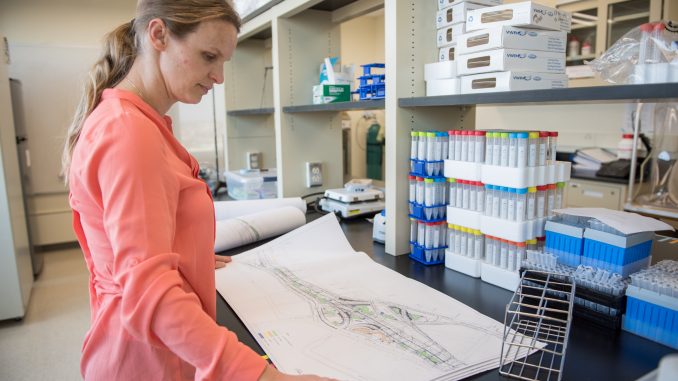
The Pennsylvania Department of Transportation’s construction to Interstate-95 requires new ways to deal with stormwater runoff, and Temple plans to help develop more sustainable, sanitary methods for construction.
The project, by the College of Engineering in conjunction with Villanova University, is helping PennDOT develop green stormwater infrastructure to avoid flooding and reduce pollutant and sewage contamination.
There are seven professors, one post-doctoral student, one graduate student and several undergraduate students who are a part of the research at Temple.
Erica McKenzie, a civil and environmental engineering professor, researches pollutant transport in the environment and plans to lend her expertise to the interstate project.
While Villanova is researching the effects of water quantity, Temple is focusing on water quality and plant health as it relates to the construction, McKenzie said.
In Philadelphia, some sewers combine stormwater infrastructure and sanitary infrastructure in one pipe.
“When we have a big rain event, there is the potential of releasing untreated sewage into the adjacent waterways, and that’s really not healthy,” McKenzie said.
The goal of the project is to reintegrate water naturally, as it would have been integrated before urban development, she added.
“One of the challenges you see in an very urban landscape is you’ve paved over a lot of the surface, and that limits the amount of water that can infiltrate into the ground,” McKenzie said.
Josh Caplan, a research project manager for the Department of Landscape Architecture and Horticulture, said that the project aims to imitate how soil absorbs water.
“[It will] slow the pace at which water enters the pipe network and gives the water alternate pathways of movement,” Caplan said.
Implementation of the project would “be effective in managing stormwater, have social value and improve the environment more generally,” Caplan added.
Benoit Van Aken, a professor of civil and environmental engineering, said besides mitigating stormwater runoff, green stormwater infrastructure is thought to have a “positive effect on water quality.”
Caplan said he collaborates with McKenzie and other researchers to determine how plants can filter metals out of water before it moves deeper into the ground or into the network of stormwater pipes.
“There are some other big benefits of green infrastructure,” Caplan said. “These include cooling the heat-absorbing surfaces that are so common in cities, providing habitat for small creatures like butterflies and other critters we might not be so interested in … improving human health, increasing property values and so on.”
The graduate and undergraduate students involved in the project go out to the researching sites and collect samples to analyze in the lab.
“This is a fairly early time in the project,” McKenzie said. “It only got started a couple months ago, but we’re already looking through more data and trying to understand what it is telling us and what the expected trends are going to be. … One of the strengths of the project is being able to look at the performance of these stormwater management practices over a longer time.”
The project will run through June 2018, but the construction by PennDOT along the I-95 corridor will continue for the next 20 years.
Though areas are being actively researched already, the entire scope of the project continues to grow as Temple is working to find new areas to examine, McKenzie said.
Noah Tanen can be reached at noah.tanen@temple.edu.


Be the first to comment